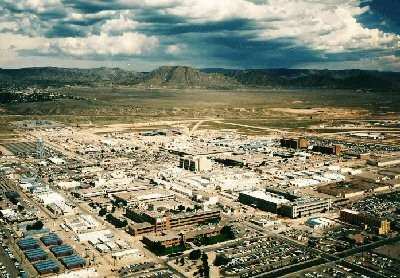Wed, Oct 15, 2008
Computer Model Simulates Effects Of Explosives Blasts
 If you want to study the possible
effects of a terrorist bomb on an airliner, one obvious way would
be to buy retired airliners, and actually blow them up. That's the
traditional method, but the Transportation security Administration
wanted to know -- in this day and age, can't we accurately simulate
an explosion using computers instead?
If you want to study the possible
effects of a terrorist bomb on an airliner, one obvious way would
be to buy retired airliners, and actually blow them up. That's the
traditional method, but the Transportation security Administration
wanted to know -- in this day and age, can't we accurately simulate
an explosion using computers instead?
USA Today reports that question has been answered. Researchers
at Sandia National Laboratories in Albuquerque, NM have created the
first computer model that simulates the effects of a bomb going off
on an airliner. The TSA says the tests could eventually lead to
changes to the restricted-items list... potentially rendering
obsolete the agency's current ban on significant quantities of
liquids in carry-on luggage.
"We can make any number of potential changes based on the
results," TSA spokesman Christopher White said. "It could affect
the amount of any given item we allow on board. It could affect our
prohibited-items list."
The TSA says it's also looking at doing separate blast tests on
regional jets. Aviation-security consultant and former United
Airlines security chief Glen Winn notes smaller RJs are "more
vulnerable than a large airplane... A small explosion on a small
aircraft is going to be nearer to the critical parts of the
airplane."
TSA says it may modify airport bomb scanners so they can better
protect the roughly 300,000 passengers who fly RJs each day.
In addition to the potential cost savings, virtual explosions
may be more accurate that testing on actual retired airliners. One
reason is that advancing technology often means retired planes
aren't representative of the current fleet.
And, White notes, "We can do infinite numbers of variables
without blowing up infinite numbers of planes."

Compared to trashing real planes, developing the software was
cheap. The labs were paid $2 million by the TSA and the Science and
Technology Directorate, another branch of the Department of
Homeland Security.
More News
Airport Marking Aids Markings used on runway and taxiway surfaces to identify a specific runway, a runway threshold, a centerline, a hold line, etc. A runway should be marked in ac>[...]
"It is extremely difficult, if not impossible, for manned aircraft to see a drone while conducting crop-enhancing and other aerial applications at low altitudes and high speeds. We>[...]
Aero Linx: The Skyhawk Association The Skyhawk Association is a non-profit organization founded by former Skyhawk Pilots which is open to anyone with an affinity for the A-4 Skyhaw>[...]
“The T-54A benefits from an active Beechcraft King Air assembly line in Wichita, Kansas, where all required METS avionics and interior modifications are installed on the line>[...]
Aero Linx: Aerostar Owners Association The Association offers the Aerostar Owner a unique opportunity to tap an invaluable source of information concerning the care and feeding of >[...]
 ANN's Daily Aero-Term (04.28.24): Airport Marking Aids
ANN's Daily Aero-Term (04.28.24): Airport Marking Aids Aero-News: Quote of the Day (04.28.24)
Aero-News: Quote of the Day (04.28.24) ANN's Daily Aero-Linx (04.28.24)
ANN's Daily Aero-Linx (04.28.24) Aero-News: Quote of the Day (04.29.24)
Aero-News: Quote of the Day (04.29.24) ANN's Daily Aero-Linx (04.29.24)
ANN's Daily Aero-Linx (04.29.24)




